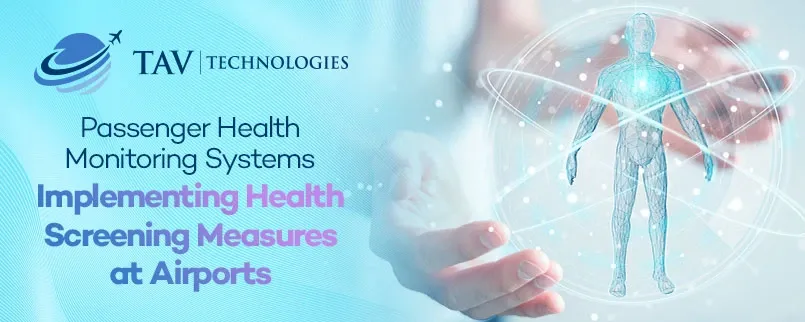
Aug 2024
In today's dynamic global travel environment, safeguarding passenger health and safety has become an essential priority for airports worldwide. The COVID-19 pandemic catalyzed the rapid adoption of advanced health monitoring technologies, which have since become integral to airport operations. This blog looks into the latest advancements in passenger health monitoring systems and their strategic implementation across airports, highlighting key innovations and their critical role in enhancing both safety and operational efficiency.
Biometric Screening and Digital Identity
Biometric technologies, including facial recognition and digital identity systems, have become integral to modern airport operations. These systems facilitate a seamless and contactless travel experience by streamlining various stages of the passenger journey, from check-in to boarding.
Some biometric programs started to utilize facial recognition to match passengers' faces with their digital identities, significantly reducing the need for physical documents and manual checks. This technology enhances security by accurately verifying identities and accelerates the boarding process by reducing queues and wait times. Beyond convenience, it also minimizes physical contact, thereby addressing health concerns related to high-touch areas and contributing to a safer travel environment.
The Role of Thermal Cameras in Airport Health Screening
Thermal cameras play a critical role in identifying passengers with elevated body temperatures at airports. These cameras use advanced infrared technology to quickly scan multiple travelers at once, alerting airport personnel to potential fever. This non-invasive screening method helps promptly isolate potentially ill individuals, reducing the risk of infectious disease spread.
Unlike biometric screening, which focuses on personal identification features, thermal cameras measure body temperature, making them suitable for health screening. However, thermal cameras can be affected by environmental factors such as ambient temperature, recent physical activity, or direct sunlight. They primarily measure skin temperature, which may not always reflect an actual fever, potentially leading to false positives or negatives. Despite these limitations, thermal cameras remain an essential tool in airport health screening, providing a crucial first line of defense against the spread of infectious diseases and contributing significantly to a safer travel environment.
Computed Tomography (CT) Scanners
Advanced CT scanners represent a major leap forward in security screening technology. These scanners generate high-resolution 3D images of passenger luggage, allowing for thorough and precise assessments without requiring passengers to remove liquids or electronics from their bags.
A notable example of this technology in action is at some major airports that recently implemented state-of-the-art CT scanners. This upgrade not only speeds up the screening process but also reduces physical contact between passengers and security staff. By improving the efficiency of the security process and aligning with new regulations, these CT scanners enhance overall passenger convenience and contribute to a safer and more efficient airport experience.
Self-Service Screening Pods
Self-service screening pods are an innovative solution designed to further streamline airport security. These pods enable passengers to perform their own security screenings, which reduces the need for direct interaction with security personnel and minimizes the potential for delays.
The Department of Homeland Security's Screening at Speed (SaS) program is testing these self-service pods at select airports. Passengers can independently complete their screenings using automated systems, which not only accelerates the process but also minimizes direct contact with security staff. This approach enhances safety and efficiency by reducing potential points of contact and improving overall processing speed. Also, direct interactions make passengers discomfort as a result of passenger surveys and this technology will help to reduce this discomfort.
Moving Forward
The integration of advanced health screening technologies at airports is crucial for maintaining passenger safety and operational efficiency, and as these innovations—such as biometric screening, advanced CT scanners, and self-service pods—are continually adopted and refined, they set new standards for speed, safety, and convenience, shaping a safer and more efficient future for global air travel.
